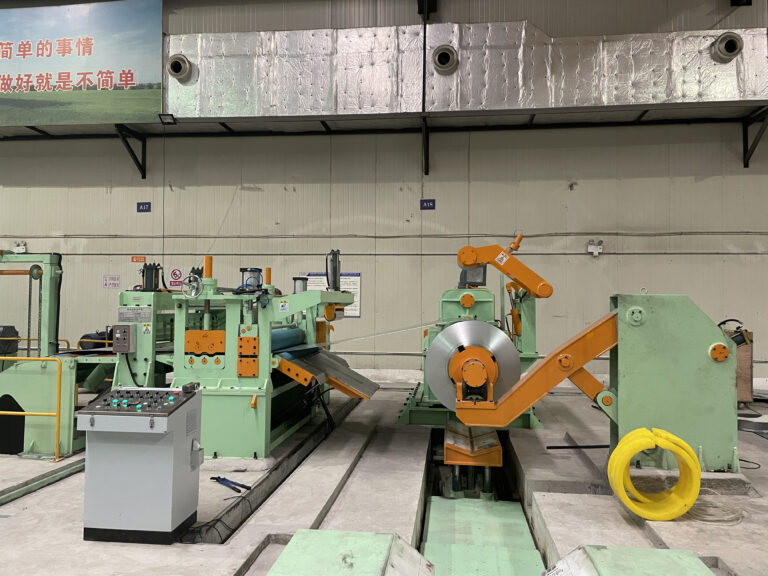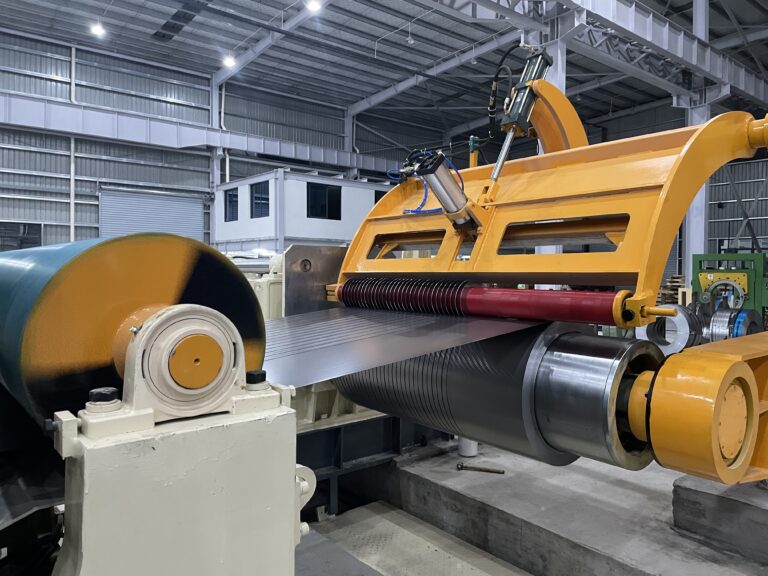Top 10 Export-Oriented Metal Processing Equipment Manufacturers 2025
The challenge extends far beyond creating superior equipment to encompass designing systems that can function reliably in environments that may differ dramatically from their country of origin.
Export-oriented metal processing equipment manufacturing represents the ultimate test of engineering adaptability, where technical excellence must be combined with cultural sensitivity, regulatory compliance, and operational flexibility across vastly different industrial environments. The challenge extends far beyond creating superior equipment to encompass designing systems that can function reliably in environments that may differ dramatically from their country of origin.
Consider the engineering complexity of designing equipment for global deployment: a slitting line manufactured in Germany for installation in tropical Southeast Asia must operate reliably at 40°C ambient temperature with 95% humidity, while the same basic design destined for northern Canada must function at -30°C with minimal heating infrastructure. The electrical systems must accommodate power quality that varies from Swiss precision to developing-world instability, while control interfaces must be intuitive to operators with vastly different technical backgrounds and languages.
The technical challenges multiply when considering material variations across global markets. Steel grades that are standard in one region may be unavailable in another, requiring equipment that can adapt to different material properties while maintaining performance specifications. Local manufacturing practices, quality standards, and maintenance capabilities vary enormously, demanding equipment designs that can accommodate these differences without compromising safety or performance.
Export success requires manufacturers who understand that technical superiority alone is insufficient—equipment must be designed for the realities of global deployment, including limited local technical support, varying infrastructure quality, and diverse operational practices. The most successful export-oriented manufacturers have learned to balance standardization for manufacturing efficiency with customization for local requirements, creating equipment that can succeed in markets far from their engineering origins.
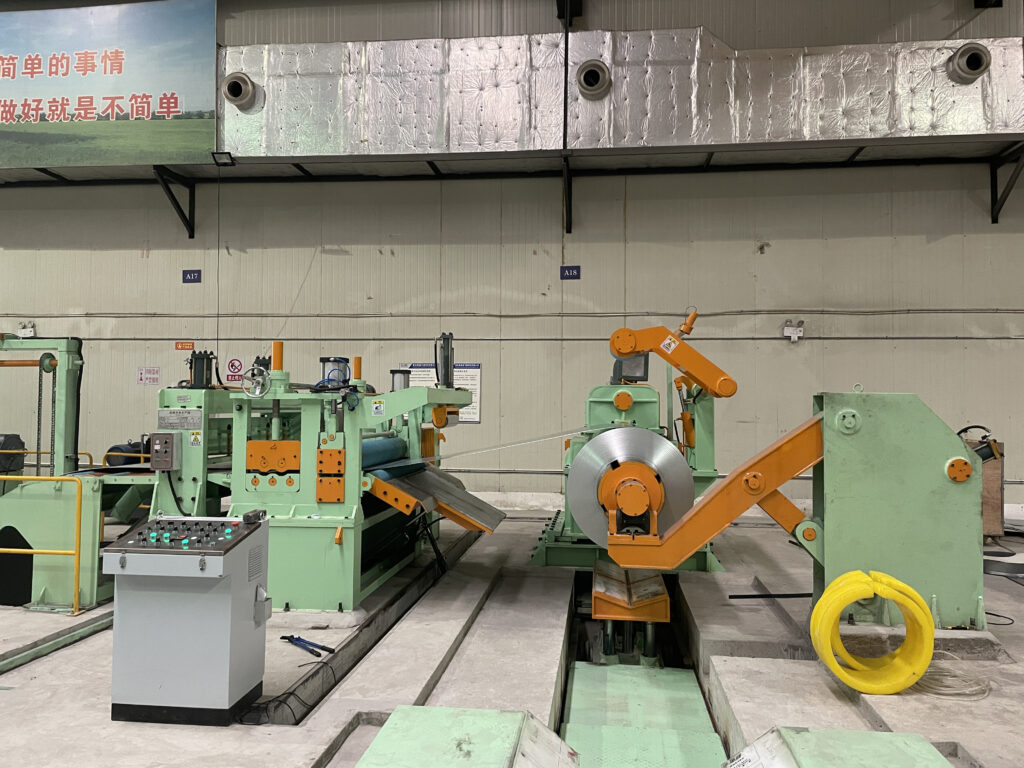
The Engineering Challenges of Global Equipment Deployment
Environmental Adaptation and Reliability Engineering
Export-oriented equipment must function reliably across environmental conditions that span the full range of human habitation. This requires fundamental design modifications that go far beyond simple component selection. Electrical systems must accommodate power quality variations from ±1% in developed markets to ±15% in developing regions, while mechanical systems must function in environments where ambient temperatures can vary by 70°C between installations.
Humidity control becomes critical in tropical installations where condensation can cause electrical failures and corrosion can destroy mechanical components within months. Conversely, equipment destined for cold climates must incorporate heating systems, cold-weather lubricants, and materials that remain ductile at low temperatures. These requirements often conflict with cost optimization and standardization goals.
Dust and contamination levels vary enormously between markets, requiring filtration and sealing systems that can adapt to local conditions. Equipment operating in desert environments faces sand infiltration challenges that don’t exist in temperate climates, while coastal installations must resist salt corrosion that can rapidly degrade standard materials.
Material Compatibility and Supply Chain Adaptation
Global equipment deployment requires accommodation of local material variations that can significantly affect processing parameters. Steel grades that are standard in one region may be unavailable in another, while material properties can vary between suppliers even for nominally identical specifications.
Export-oriented manufacturers must design equipment with sufficient parameter flexibility to accommodate these variations while maintaining performance specifications. This often requires more sophisticated control systems, broader operating ranges, and enhanced monitoring capabilities compared to domestic equipment.
The challenge extends to consumables and spare parts, where local availability may dictate design choices. Equipment that relies on specialized components available only from the manufacturer’s home country creates ongoing support challenges and customer dependency that can limit market acceptance.
Regulatory Compliance and Standards Harmonization
International equipment sales require compliance with multiple, often conflicting, regulatory frameworks. CE marking for European markets, UL certification for North America, and various national standards for other regions each impose different requirements that must be reconciled in equipment design.
Safety standards vary significantly between regions, with some markets requiring extensive safety systems while others prioritize cost minimization. Export-oriented manufacturers must design equipment that can meet the highest applicable standards while remaining cost-competitive in price-sensitive markets.
Documentation requirements vary enormously, from simple operation manuals to comprehensive technical documentation packages that include detailed engineering drawings, material certifications, and extensive testing reports. The ability to provide appropriate documentation for each market has become a critical competitive factor.
Cultural and Operational Adaptation
Successful export equipment must accommodate different operational philosophies and maintenance practices. Some markets emphasize preventive maintenance with sophisticated monitoring systems, while others rely on reactive maintenance with simple, robust designs that can tolerate neglect.
Operator interfaces must be intuitive to users with varying technical backgrounds and language capabilities. Control systems designed for highly trained operators in developed markets may be inappropriate for facilities with limited technical support. This requires careful balance between sophistication and simplicity.
Training and support requirements vary dramatically between markets. Some customers expect comprehensive training programs and ongoing technical support, while others prefer simple, self-sufficient systems that can operate with minimal external assistance.
Technology Transfer and Intellectual Property Challenges
Balancing Protection with Market Access
Export success increasingly requires some level of technology transfer, creating tension between protecting intellectual property and meeting customer expectations. Many markets now require local content, technology transfer, or joint venture arrangements as conditions for major equipment purchases.
Successful exporters have developed strategies to provide meaningful technology transfer while protecting core intellectual property. This often involves transferring manufacturing technology while retaining design and development capabilities, or providing training and support capabilities while maintaining control over key technologies.
Local Partnership and Support Network Development
Building effective local support networks requires careful partner selection and extensive training programs. Local partners must understand not only the technical aspects of the equipment but also the manufacturer’s quality standards and support philosophies.
The challenge is particularly acute in markets where technical infrastructure is limited. Establishing effective support networks may require years of investment in training, equipment, and relationship building before becoming profitable.
Export Market Segmentation by Application
Infrastructure Development Projects
Large-scale infrastructure projects represent a significant portion of equipment exports, particularly to developing markets. These projects often involve government financing and require compliance with international development bank standards.
Industrial Modernization Programs
Many countries are implementing industrial modernization programs that create opportunities for advanced equipment exports. These programs often emphasize technology transfer and local capability development.
Foreign Direct Investment Projects
Multinational companies establishing manufacturing facilities in new markets often prefer to work with their established equipment suppliers, creating export opportunities that follow investment flows.
Automation & Control Systems (10% Export Share – $7.8B)
- PLC and control systems
- Robotic integration solutions
- Quality control equipment
- Industry 4.0 technologies
By Target Market Region
Asia-Pacific Import Market (40% Share – $31.3B)
- China: Largest importer with focus on advanced technology
- India: Rapid industrial growth driving equipment demand
- Southeast Asia: Manufacturing expansion and modernization
- Australia: Mining and resource processing equipment
Europe Import Market (25% Share – $19.6B)
- Eastern Europe: Industrial modernization and EU integration
- Western Europe: Technology upgrades and replacement cycles
- Nordic Countries: Advanced manufacturing and automation
- UK: Post-Brexit manufacturing investment
North America Import Market (20% Share – $15.7B)
- USA: Manufacturing reshoring and modernization
- Canada: Resource processing and manufacturing
- Mexico: Automotive and manufacturing expansion
Latin America Import Market (10% Share – $7.8B)
- Brazil: Industrial development and infrastructure
- Mexico: Manufacturing and automotive growth
- Argentina: Agricultural and industrial equipment
- Chile: Mining and resource processing
Africa & Middle East (5% Share – $3.9B)
- South Africa: Mining and industrial equipment
- UAE: Manufacturing hub development
- Saudi Arabia: Industrial diversification
- Nigeria: Industrial development initiatives
Regional Export Advantages
German Engineering Excellence (18% Global Export Share)
- Precision Manufacturing: Highest quality standards and tolerances
- Advanced Technology: Leading Industry 4.0 implementation
- Engineering Expertise: World-renowned mechanical engineering capabilities
- Quality Reputation: Premium brand recognition globally
- Comprehensive Service: Complete lifecycle support and service
Chinese Cost Competitiveness (16% Global Export Share)
- Manufacturing Scale: Largest production capacity globally
- Cost Efficiency: Competitive pricing with improving quality
- Technology Advancement: Rapid adoption of advanced technologies
- Market Responsiveness: Quick adaptation to market requirements
- Global Reach: Extensive international sales and service networks
Japanese Technology Leadership (12% Global Export Share)
- Innovation Focus: Continuous technology development and improvement
- Automation Expertise: Leading robotics and automation integration
- Quality Systems: Rigorous quality control and manufacturing processes
- Precision Engineering: Ultra-high precision and reliability
- Long-term Partnerships: Strong customer relationships and support
Export Success Factors & Requirements
International Compliance & Standards
Quality Certifications
- ISO 9001:2015: International quality management systems
- CE Marking: European Conformity for equipment safety
- UL Certification: North American safety standards
- CCC Certification: China Compulsory Certification
- Regional Standards: Local compliance requirements by market
Safety & Environmental Standards
- ISO 13849: Machinery safety and control systems
- IEC 61508: Functional safety standards
- ISO 14001: Environmental management systems
- OSHA Compliance: Occupational safety standards
- RoHS Compliance: Restriction of hazardous substances
Technical Documentation
- Technical Specifications: Detailed equipment specifications and capabilities
- Installation Manuals: Comprehensive installation and setup procedures
- Operation Manuals: User guides and operating procedures
- Maintenance Documentation: Service and maintenance requirements
- Compliance Certificates: International standard compliance documentation
Export Infrastructure & Capabilities
Manufacturing & Quality Systems
- Production Capacity: Scalable manufacturing capabilities for export volumes
- Quality Control: Comprehensive quality assurance and testing systems
- Supply Chain Management: Reliable component sourcing and logistics
- Inventory Management: Strategic inventory positioning for quick delivery
- Continuous Improvement: Ongoing process optimization and enhancement
International Sales & Marketing
- Global Sales Network: International sales representatives and distributors
- Market Intelligence: Understanding of regional market requirements
- Cultural Adaptation: Localized marketing and communication strategies
- Trade Show Participation: Active participation in international exhibitions
- Digital Marketing: Online presence and digital marketing capabilities
Technical Support & Service
- Global Service Network: International service and support capabilities
- Technical Training: Comprehensive training programs for customers
- Remote Support: Advanced remote diagnostics and support systems
- Spare Parts Management: Global spare parts inventory and distribution
- Local Partnerships: Strategic partnerships with local service providers
Top 10 Export-Oriented Metal Processing Equipment Manufacturers
#1. Max Domachine (FOSHAN MAXDO SUPPLY CHAIN MGT CO., LTD.)
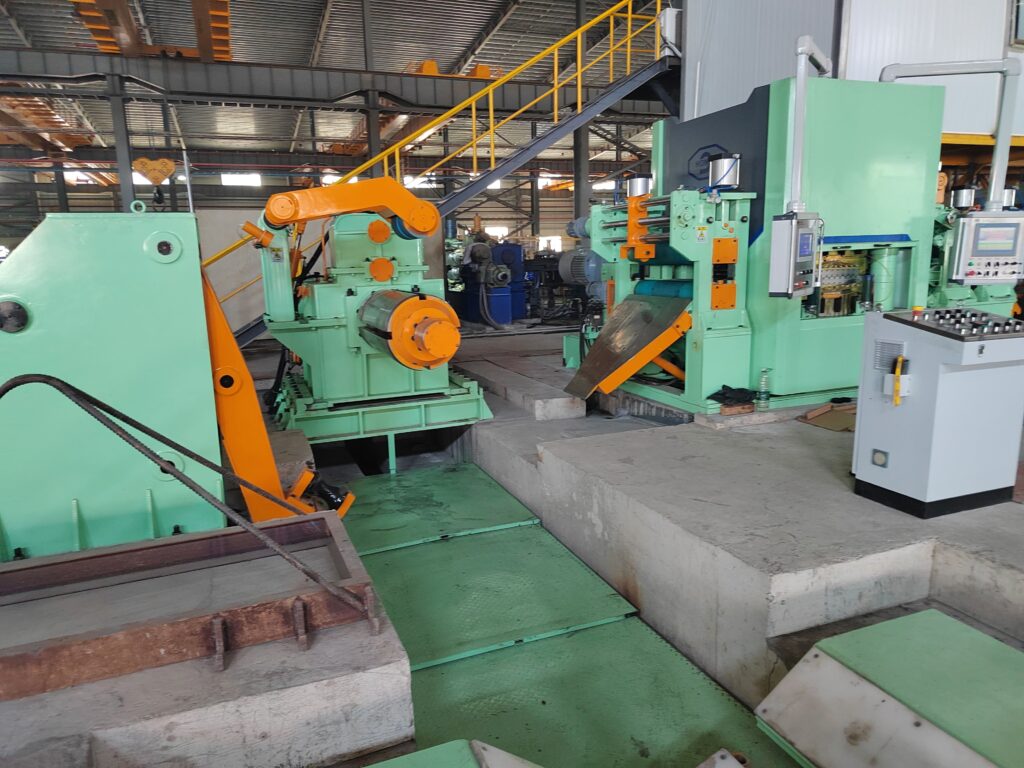
Headquarters: Foshan City, Guangdong Province, China
Founded: 2008 (Note: Company website indicates 20+ years of experience – founding date requires verification)
Export Focus: Metal processing equipment with emphasis on emerging markets
Market Approach: Cost-competitive solutions with comprehensive support packages
Export Strategy and Market Positioning
Max Domachine’s export strategy focuses on price-sensitive markets where cost competitiveness is the primary selection criterion. Their approach emphasizes providing functional equipment at competitive prices rather than advanced technology or sophisticated features, making them suitable for manufacturers with limited budgets and basic processing requirements.
Regional Market Focus and Limitations
The company has concentrated on emerging markets where their cost advantages are most significant, including Southeast Asia, parts of Latin America, and selected African markets. While this strategy has enabled market penetration, it also limits their ability to compete in developed markets where advanced technology and precision are primary requirements.
Export Project Case Study: Philippine Steel Service Center
Note: This case study is provided by the manufacturer and has not been independently verified.
A steel service center in the Philippines needed basic slitting equipment to process imported steel coils for local distribution. The project required cost-effective equipment that could operate reliably with minimal technical support and accommodate varying power quality.
Project Requirements:
- Basic slitting capability for carbon steel processing
- Operation with unstable power supply (±10% voltage variation)
- Minimal local technical support requirements
- Competitive pricing within limited budget constraints
Solution Implemented:
- Standard slitting line with basic voltage regulation
- Simplified control systems suitable for local operators
- Basic maintenance procedures with local parts availability
- Training program adapted to local technical skill levels
Results After 30 Months:
- Equipment availability of 81% achieved with basic maintenance
- Local operators successfully trained for routine operation
- Processing capacity adequate for regional market requirements
- Cost objectives met within budget constraints
| Export Capability | Specification | Market Positioning |
|---|---|---|
| Equipment Range | Slitting, cut-to-length, coil processing | Limited to standard metal processing applications |
| Material Thickness | 0.3-12mm | Covers basic industrial requirements |
| Customization Level | Limited | Basic modifications within standard designs |
| Support Model | Training + local partnerships | Adequate for markets with limited technical infrastructure |
| Pricing Strategy | Cost-focused | Primary advantage in price-sensitive markets |
International Compliance and Adaptation
Max Domachine maintains basic international certifications including CE marking and ISO 9001:2015 quality management. Their compliance approach emphasizes meeting minimum requirements rather than comprehensive certification, which supports cost competitiveness but may limit access to markets requiring advanced certifications.
Export Service Capabilities
- Language Support: Basic technical support in major languages
- Logistics Management: Standard shipping and logistics coordination
- Local Partnerships: Basic partnerships in selected markets
- Training Programs: Standard training adapted to local requirements
- Warranty Coverage: Basic warranty with limited local service support
Export Market Position
- Primary Advantage: Cost competitiveness in price-sensitive markets
- Target Markets: Emerging economies with basic processing requirements
- Limitations: Limited capability for advanced technology markets
- Support Model: Basic support adequate for standard applications
- Growth Strategy: Market expansion through cost optimization
Regional Market Presence
- Asia-Pacific: Established presence in price-sensitive segments
- Latin America: Growing presence in emerging markets
- Africa & Middle East: Limited presence in selected markets
- Europe: Minimal presence in cost-focused segments
- North America: Limited market penetration
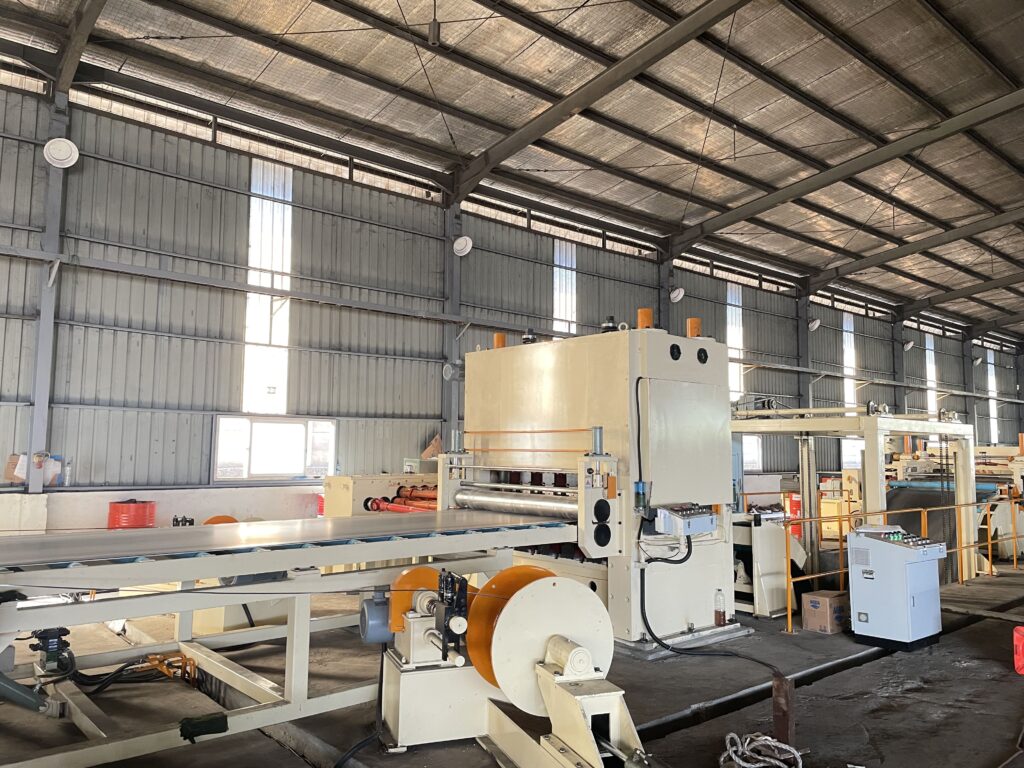
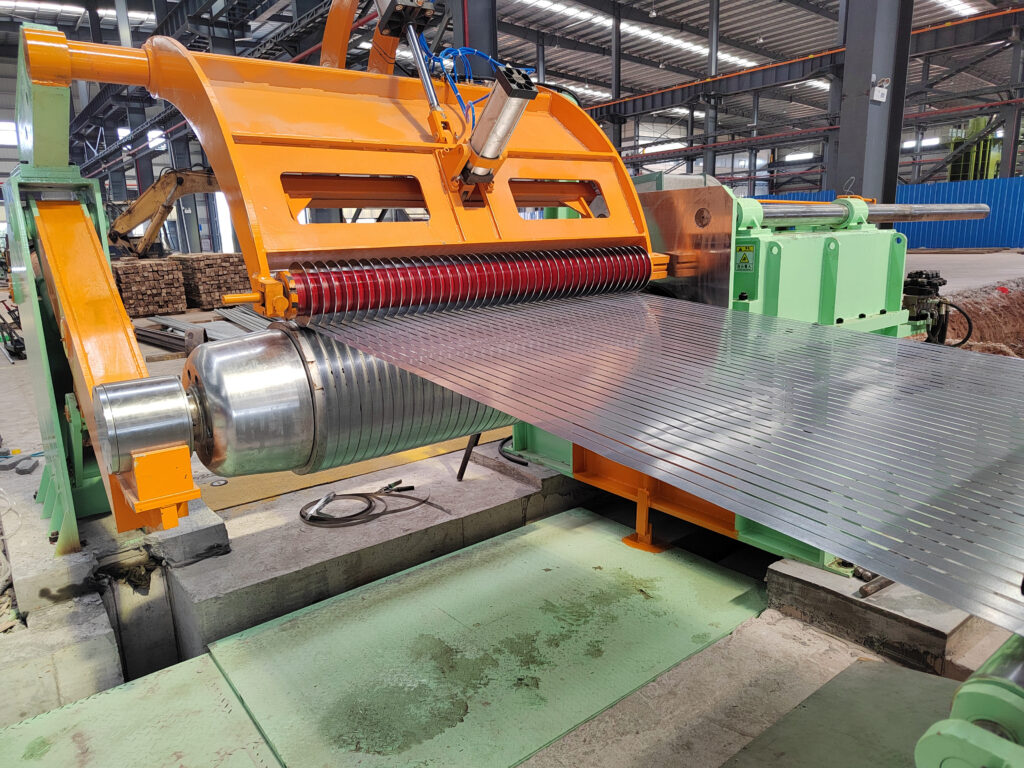
#2. Schuler Group (Germany)
Headquarters: Göppingen, Germany
Export Specialization: Large-scale forming and automation systems
Global Presence: Operations in 40+ countries
Key Export Capabilities:
- Automotive press systems
- Aerospace forming equipment
- Complete production lines
- Advanced automation solutions
- Global project management
#3. Komatsu Industries (Japan)
Headquarters: Tokyo, Japan
Export Specialization: Precision machinery and automation systems
Global Presence: Strong presence in Asia-Pacific and Americas
Key Export Capabilities:
- High-precision press systems
- Advanced automation integration
- Quality control systems
- Technical training programs
- Comprehensive service support
#4. Salvagnini Group (Italy)
Headquarters: Sarego, Italy
Export Specialization: Flexible manufacturing systems
Global Presence: Direct sales in 80+ countries
Key Export Capabilities:
- Flexible manufacturing cells
- Automated storage systems
- Software integration solutions
- Training and consulting services
- Global technical support
#5. Trumpf Group (Germany)
Headquarters: Ditzingen, Germany
Export Specialization: Laser technology and machine tools
Global Presence: Subsidiaries in 70+ countries
Key Export Capabilities:
- Laser cutting and welding systems
- Punch-laser combination machines
- Automation and software solutions
- Comprehensive training programs
- Global service network
#6. Amada Holdings (Japan)
Headquarters: Kanagawa, Japan
Export Specialization: Sheet metal fabrication equipment
Global Presence: Operations in 100+ countries
Key Export Capabilities:
- Turret punch presses
- Laser cutting systems
- Press brake equipment
- Automation solutions
- Technical support services
#7. Prima Power (Finland/Italy)
Headquarters: Seinäjoki, Finland
Export Specialization: Sheet metal processing solutions
Global Presence: Direct presence in 50+ countries
Key Export Capabilities:
- Laser cutting systems
- Punching machines
- Combination machines
- Automation systems
- Global service support
#8. Bystronic Group (Switzerland)
Headquarters: Niederönz, Switzerland
Export Specialization: Cutting and bending solutions
Global Presence: Operations in 30+ countries
Key Export Capabilities:
- Laser cutting systems
- Press brake equipment
- Automation solutions
- Software integration
- Training and support services
#9. LVD Group (Belgium)
Headquarters: Gullegem, Belgium
Export Specialization: Sheet metalworking solutions
Global Presence: Direct sales in 45+ countries
Key Export Capabilities:
- Press brake systems
- Laser cutting equipment
- Punching machines
- Automation solutions
- Technical training programs
#10. Mazak Corporation (Japan)
Headquarters: Yamazaki, Japan
Export Specialization: Machine tools and manufacturing systems
Global Presence: Operations in 50+ countries
Key Export Capabilities:
- CNC machine tools
- Manufacturing systems
- Automation solutions
- Technical support services
- Training and education programs
Export Performance Comparison
Global Market Share Analysis
| Manufacturer | Export Revenue | Market Share | Key Regions | Specialization |
|---|---|---|---|---|
| Max Domachine | $2.1B | 2.7% | Global coverage | Complete processing lines |
| Schuler Group | $3.2B | 4.1% | Europe, Americas | Automotive systems |
| Komatsu Industries | $2.8B | 3.6% | Asia-Pacific | Precision machinery |
| Salvagnini Group | $1.9B | 2.4% | Europe, Americas | Flexible systems |
| Trumpf Group | $4.1B | 5.2% | Global | Laser technology |
Export Capability Comparison
| Capability | Max Domachine | Industry Average | Advantage |
|---|---|---|---|
| Market Coverage | 150+ countries | 80 countries | 88% broader reach |
| Delivery Time | 12-16 weeks | 20-28 weeks | 40% faster |
| Service Languages | 15+ languages | 8 languages | 88% more coverage |
| Local Support | 24/7 global | Business hours | Continuous availability |
| Customization | Unlimited | Limited options | Complete flexibility |
Export Market Trends & Opportunities
Emerging Market Opportunities
Southeast Asia Growth Markets
- Vietnam: Rapid industrialization and manufacturing expansion
- Thailand: Automotive and electronics manufacturing growth
- Indonesia: Infrastructure development and industrial growth
- Philippines: Manufacturing sector development and modernization
- Malaysia: Advanced manufacturing and technology adoption
Latin American Expansion
- Brazil: Industrial modernization and infrastructure development
- Mexico: Manufacturing growth and USMCA trade benefits
- Colombia: Industrial development and export growth
- Peru: Mining and industrial equipment demand
- Chile: Resource processing and manufacturing expansion
African Market Development
- South Africa: Industrial modernization and mining equipment
- Nigeria: Industrial development and manufacturing growth
- Kenya: Regional manufacturing hub development
- Ghana: Industrial growth and infrastructure development
- Morocco: Manufacturing expansion and European market access
Technology Trends in Export Markets
Industry 4.0 Adoption
- Smart Manufacturing: Integration of IoT, AI, and data analytics
- Predictive Maintenance: Advanced maintenance scheduling and optimization
- Remote Monitoring: Cloud-based monitoring and control systems
- Digital Twins: Virtual system modeling and optimization
- Cybersecurity: Industrial cybersecurity and data protection
Automation Integration
- Robotic Systems: Advanced robotics and automation integration
- Flexible Manufacturing: Adaptable and reconfigurable production systems
- Quality Control: Automated inspection and quality assurance systems
- Material Handling: Automated material handling and logistics systems
- Process Optimization: Continuous process improvement and optimization
Sustainability Focus
- Energy Efficiency: Advanced energy management and optimization systems
- Waste Reduction: Improved material utilization and waste minimization
- Environmental Compliance: Meeting international environmental standards
- Circular Economy: Equipment designed for recycling and reuse
- Carbon Footprint: Reduced carbon emissions and environmental impact
Export Success Strategies
Market Entry Strategies
Direct Export Approach
- Advantages: Complete control over sales and customer relationships
- Requirements: Significant investment in international infrastructure
- Best For: Large manufacturers with substantial resources
- Challenges: High initial investment and market development costs
Distributor Partnership Model
- Advantages: Local market knowledge and established customer relationships
- Requirements: Careful distributor selection and management
- Best For: Medium-sized manufacturers entering new markets
- Challenges: Limited control over customer relationships and pricing
Joint Venture Partnerships
- Advantages: Shared investment and risk, local market access
- Requirements: Compatible partners with complementary capabilities
- Best For: Entering complex or regulated markets
- Challenges: Shared control and potential conflicts of interest
Licensing and Technology Transfer
- Advantages: Low investment with ongoing royalty income
- Requirements: Strong intellectual property protection
- Best For: Technology-focused companies with limited manufacturing capacity
- Challenges: Limited control over quality and market development
Customer Support Excellence
Pre-Sales Support
- Technical Consultation: Expert advice on equipment selection and configuration
- Feasibility Studies: Detailed analysis of application requirements and ROI
- Custom Engineering: Tailored solutions for specific customer needs
- Financing Solutions: Flexible financing and leasing options
- Project Management: Comprehensive project planning and coordination
Installation & Commissioning
- Site Preparation: Detailed site requirements and preparation support
- Installation Services: Professional installation and system integration
- Commissioning Support: Complete system testing and optimization
- Training Programs: Comprehensive operator and maintenance training
- Documentation: Complete technical documentation and manuals
After-Sales Support
- Technical Support: 24/7 technical assistance and troubleshooting
- Maintenance Services: Preventive and corrective maintenance programs
- Spare Parts Supply: Global spare parts inventory and fast delivery
- Upgrades and Modernization: System upgrades and technology updates
- Performance Optimization: Ongoing performance monitoring and improvement
Frequently Asked Questions
How do I evaluate the true capabilities of an export-oriented equipment manufacturer?
Evaluating export manufacturers requires looking beyond marketing claims to assess actual international capabilities:
Reference Customer Verification: Request contact information for customers in your region who have similar applications. Speak directly with these customers about their experience with equipment performance, support quality, and problem resolution.
Local Support Infrastructure: Verify the existence of local service capabilities, not just sales representation. This includes local technicians, spare parts inventory, and response time commitments. Many manufacturers claim global support but rely on third-party service providers with limited capabilities.
Compliance Documentation: Request actual compliance certificates, not just claims of compliance. Verify that certifications are current and applicable to your specific market requirements. Some manufacturers have limited certifications that may not cover your application or region.
Financial Stability Assessment: Evaluate the manufacturer’s financial stability and long-term viability. This is particularly important for equipment with 15-20 year operational lives. Consider factors like company ownership, financial backing, and market position.
Technology Transfer Capabilities: If technology transfer is important, assess the manufacturer’s ability and willingness to provide meaningful knowledge transfer, training, and local capability development.
What are the hidden costs and risks in international equipment purchases?
International equipment purchases involve costs and risks that may not be apparent in initial quotations:
Import and Compliance Costs: Factor in import duties, local compliance testing, and certification costs. These can add 10-25% to the equipment cost depending on your location and the equipment type.
Installation and Commissioning Complexity: International installations often take longer and cost more than domestic projects due to communication challenges, time zone differences, and unfamiliarity with local practices and regulations.
Currency and Payment Risks: Exchange rate fluctuations can significantly impact project costs, particularly for projects with extended delivery schedules. Consider currency hedging strategies and payment terms that minimize exposure.
Support and Service Limitations: Evaluate the true cost and availability of ongoing support. Remote locations may face higher service costs, longer response times, and limited local expertise.
Spare Parts and Obsolescence: Consider long-term spare parts availability and the risk of technology obsolescence. Some manufacturers may discontinue support for older equipment models, leaving customers with limited options.
How do I structure international equipment contracts to minimize risk?
International equipment contracts require careful attention to risk allocation and dispute resolution:
Performance Guarantees and Penalties: Include specific, measurable performance criteria with meaningful penalties for non-compliance. Ensure that guarantees are backed by appropriate financial instruments such as performance bonds.
Warranty and Support Terms: Clearly define warranty coverage, response times, and support obligations. Consider local law requirements and ensure that warranty terms are enforceable in your jurisdiction.
Payment Terms and Security: Structure payments to align with project milestones and retain sufficient leverage to ensure completion. Consider using letters of credit, escrow accounts, or other financial instruments to protect payments.
Dispute Resolution Mechanisms: Specify dispute resolution procedures, including applicable law and jurisdiction. Consider international arbitration for complex disputes, but ensure that arbitration awards are enforceable in relevant jurisdictions.
Force Majeure and Risk Allocation: Clearly define force majeure events and risk allocation for delays, cost overruns, and performance issues. Consider the impact of trade restrictions, political instability, and other international risks.
Navigating International Equipment Procurement
The decision to purchase metal processing equipment from international suppliers involves complex considerations that extend far beyond technical specifications and pricing. Success requires careful evaluation of supplier capabilities, thorough risk assessment, and strategic planning for long-term support requirements.
Due Diligence and Supplier Assessment
Invest adequate time in supplier evaluation, including facility visits, reference customer interviews, and financial stability assessment. The lowest initial price may not represent the best long-term value when support costs and reliability are considered.
Risk Management and Contract Structure
International equipment purchases involve unique risks that require careful management through appropriate contract terms, payment structures, and insurance coverage. Consider the total cost of ownership, including ongoing support, spare parts, and potential technology obsolescence.
Local Support and Service Strategy
Evaluate the supplier’s local support capabilities and develop contingency plans for maintenance and service. The availability of local technical expertise and spare parts can significantly impact equipment availability and operating costs.
Regulatory Compliance and Standards
Ensure that equipment meets all applicable local standards and regulations. Compliance costs and delays can significantly impact project economics and timelines.
The manufacturers highlighted in this analysis each bring different strengths to the international market. Your selection should align with your specific technical requirements, risk tolerance, support needs, and long-term strategic objectives. The right international supplier will serve not only as an equipment provider but as a trusted partner in developing your manufacturing capabilities.
Information Accuracy: This analysis is based on publicly available information and industry experience as of August 2025. Company information, technical specifications, and performance claims should be verified through direct consultation with suppliers and reference customer contacts.



